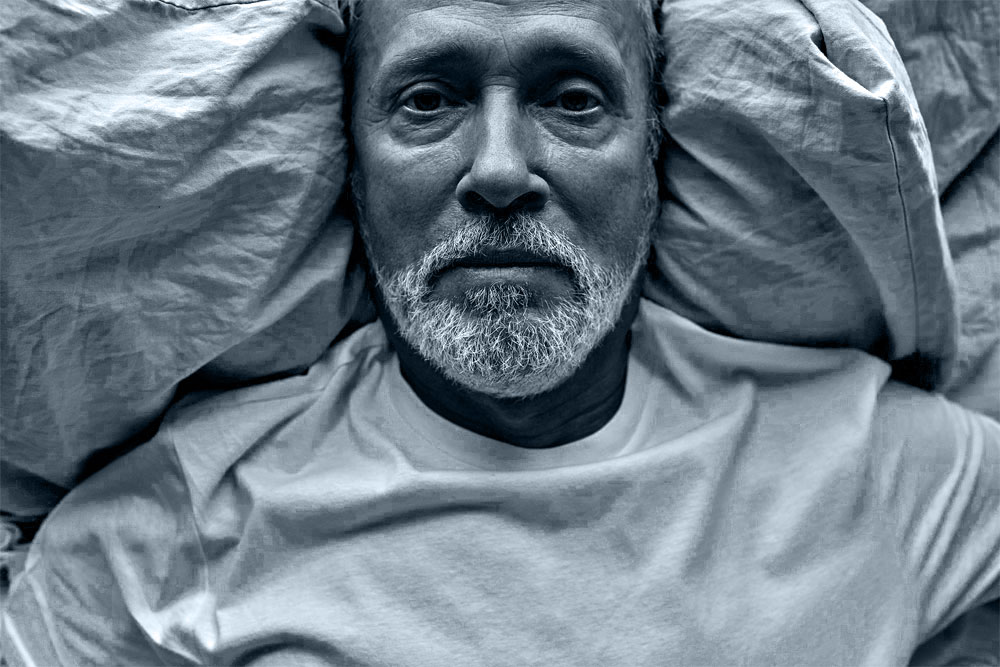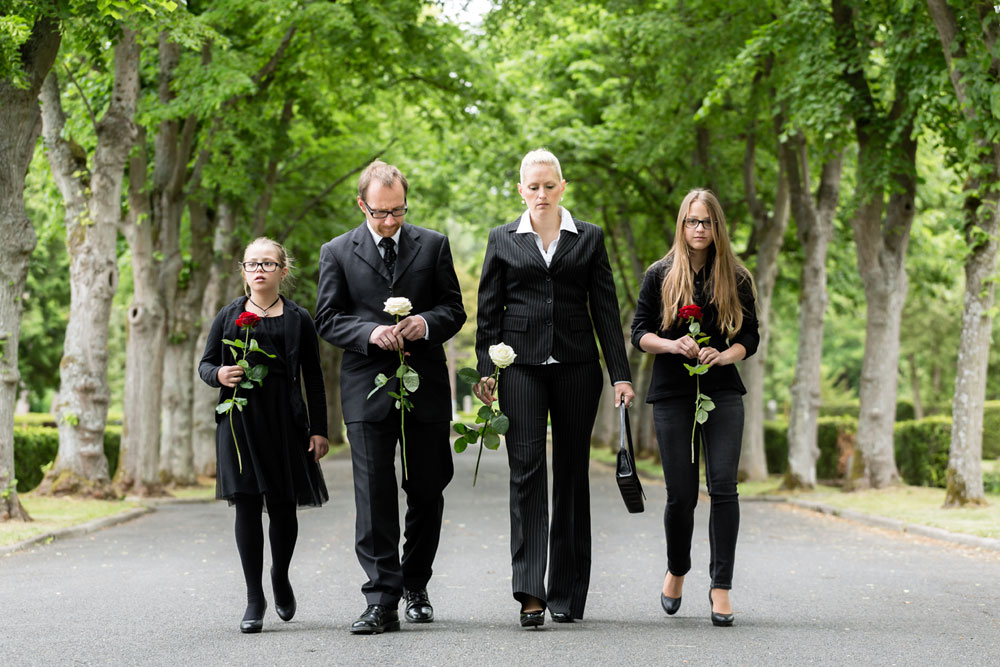Suicide rates among the elderly are much higher than many people realize, but many seniors feel that suicide means they are taking charge of their death.
Mood disorders are not always apparent with elderly suicide. They often rationalize their suicidal tendencies as coming to their life’s end by their means rather than nature or sometimes, someone else’s means. Sometimes, society encourages elderly dependence on younger children or long-term care facilities. The wants and needs of the individual are ignored.
When they feel they have become a burden on themselves, their loved ones, or society, elderly patients will begin to consider suicide and rationalize it as taking charge; however, this is when they usually give up the will to live.
Table of Contents
What causes suicidal thoughts in elderly patients?
Sometimes, elderly patients have mental disorders, just as other patients do. However, many elderly patients feel that their lives have extended beyond usefulness. Anne Pamela Francis Wand et al. argue, “Some of these individuals may be chronically bored, restricted in activity, and have little or no avenues to experience any pleasure in life, such that they are “waiting to die.”1 The elderly population is not well cared for in much of western culture.
Other cultures tend to keep their elders in the home unless caring for them poses a danger to the family or elder. However, in some western cultures, the elders are cast aside when family members grow up and move away.
Sometimes, elderly patients, no matter their culture, begin to feel that they are a drain and strain on their families. This feeling causes rational suicidal ideation among the elderly, and they begin to plan their exit.
Age and loneliness contribute to the suicidal tendencies of the elderly. Western Michigan University asserts, “Risk goes up with age, and the elderly, white men in particular who are 85 and older, divorced, widowed or separated have a suicide rate that is six times that of the overall national rate.”2 This rate is astonishing, but the loneliness associated with older single men can contribute to their feeling of uselessness. People generally want to feel needed.
As people get older, they often begin to contemplate the end of their lives. Els van Wijngaarden, Carlo Leget, and Anne Goossensen note, “As they feel less and less involved in life, participants express a yearning desire to end this process, ideating on manners to escape from the uncomfortable feelings, and death seems the only possible way out.”3
The secret to maintaining a senior’s will to live might be to give them something to live to do. Older people who get lonely begin to feel that their lives have run their course. Besides being suicidal, this group is usually free of psychiatric disorders or problems. Rational suicide among the elderly is more than a mental health concern.
Besides loneliness, health can affect rational suicide among the elderly. It is paramount that we reiterate that this is not mental health affecting suicidal ideation. Mental health and suicidal ideation are often comorbid, but in rationalized suicide, this is not a factor. We will discuss mental health shortly. Physical health, however, often impacts a person’s thoughts of suicide. These health conditions are not always terminal either. We have often heard of advanced AIDS patients, cancer patients, or other terminally ill patients seeking euthanasia-related solutions. Still, in the elderly, sometimes, it is merely a matter of failing physical health.
As the number of medications increases, the will to live sometimes decreases. Carla Gramaglia, Raffaella Calati, and Patrizia Zeppegno assert, “Although life expectancy for those living in western societies is higher than ever before in human history, this has had the effect of making it difficult for medical professionals to find a balance between patients’ autonomy and clinicians’ responsibility, to admit when someone is dying and to know where to draw the line in terms of offering more treatment.”4 Elderly patients begin to feel like they are just racking up more illnesses. They reduce their humanity to bottles of medications. They cannot continue to take more and more medications. This article implies that medical physicians need to allow patients to take control of their lives rather than extending them.

Many elderly patients who refuse medications for conditions are considered non-compliant or sometimes combative. However, if an elderly heart patient does not want to replace her pacemaker, she should be allowed to choose not to do so. This choice will likely end in death for her sooner than later, but a patient needs the autonomy to choose treatments. Wand et al. point out, “Physicians in the Netherlands estimated that approximately 17% of requests for euthanasia came from patients who were tired of living.”5 This is nearly one-fifth of all requests making it, most likely, one of the most often cited reasons. Elderly patients deserve a better ending than being too tired to live.
Mental health and rational suicide of the elderly
One of the reasons that most literature does not consider mental health patients as rationalizing suicide is that when they are having suicidal thoughts, they are not otherwise rational. The elderly, on the other hand, might be behaving entirely rationally other than contemplating suicide. The mental health patient also tends to exaggerate the impact of their conditions or choices. Elderly patients do seem to understand that their lives are rapidly coming to a close anyway, and they cannot fathom continuing to live under the present conditions. Rational suicide among the elderly may have mental health implications, but it is more often a social or physical problem.
Gramaglia et al. posit that “From a clinical standpoint, an ageist attitude may lead clinicians to consider older adults’ suicides as rational choices (especially if the person has physical illnesses) and affect clinicians’ ability to identify psychopathology.”6 For many clinicians, as patients age, their cognitive function decreases, but many elderly patients have the presence of mind, and they understand their situations. However, just because a patient is elderly, the clinician should not discount the mental health concerns. Mental health conditions should be ruled out.
Likewise, if a patient is under mental health treatment and seems that they are responsive to treatment, all suicidal ideology should not be classified as their mental health condition. Thorough patient exams are necessary.
Preventing rational suicide among the elderly
Not everyone wants to prevent rational suicide among the elderly. Sometimes, the advocates for rational suicide value the older adult’s sense and need for autonomy. Melissa Baily shows, “The concept of rational suicide is highly controversial; it runs counter to many societal norms, religious and moral convictions and the efforts of suicide prevention workers who contend that every life is worth saving.”7
This claim does not imply that not all lives have value. On the contrary, elderly patients should have the ability to determine how they live their lives. For many advocates, rational suicide among the elderly is a right.
Helping these patients feel loved, wanted, and essential can often help prevent these feelings, but this is not always the case. Wijngaarden et al. notice that some elderly patients began to feel lonely even while living with others, even those they loved. If the living arrangements involved the elderly patients’ children or younger family members, the depression and anxiety of becoming a burden on these family members, often, weighed heavily on their minds. These patients no longer felt connected to some loved ones. They loved them and were glad they were there, but the connections seemed forced or unhappy.

Seniors should all be encouraged to live their best lives, but what if that means dignity in their deaths? Hospice and other agencies often lobby for patients to be able to die with dignity. Many “suicidal” elderly patients would argue that rational suicide among the elderly is dying with dignity. The Washington Post brings Lois’s story, “A widow with no children, Lois said she would rather end her own life than deteriorate slowly over seven years, as her mother did after she broke a hip at age 90.”8
For Lois, and many like her, dementia, Alzheimer’s, and other mentally and physically deteriorative conditions are worse than death. These adults have decided that dying with dignity means not suffering through these years of failing health and autonomy. How does society reconcile that with the notion that suicide is not healthy?
Whatever the reason for rational suicide, loved ones need to begin by making their family and friends feel valued more than anything. They will often know that you love them, but understanding that they are not in the way and that they hold value is often more critical than any coping measure you may take. An ounce of prevention is often worth a pound of cure.
Arguments against rational suicide among the elderly
You can, of course, imagine that most of the arguments against these acts come from moral or religious perspectives, but there are other concerns as well. As Wijngaarden et al. noted, the slippery slope argument gets the heft of the concern. If rational suicide among the elderly becomes accepted practice, at what point does society stop accepting suicides are rational?
Mental health patients and suicide prevention strategies have been studied since the dawn of humanity. We often want to prevent suicide for any reason. However, some cultures do not view suicide in quite the same way. I am not saying commit suicide to restore honor to your family. Still, the difference in suicide morals could be used to spark a debate about the ethics of preventing suicide in specific populations.
Life is precious, and we must preserve it. The elderly often feel as though they have been preserved long enough. They are overwhelmed and want to rest. Resting to them is death—an eternal sleep. They may believe in the value of human life, but the elderly who are rationalizing suicide will commonly feel as though things lose value when they are worn down. Being tired of living is almost always one of the arguments that they make for rationalizing their suicidal thoughts.

Terminal vs. Elderly
Euthanasia, as a vocabulary word, has an entirely different denotation than rational suicide among the elderly. Suppose that an elderly patient is also terminal, the argument for and against suicide changes. Euthanasia is only available in a limited number of countries worldwide and is almost always deferred to the Netherlands and its laws. However, some argue that the nature of being elderly makes one terminal. Their lives are rapidly declining and coming to an end. Palliative care was designed to make those last days have the highest quality of life possible. If you could choose when those days ended, wouldn’t you be choosing the best quality of life that you could?
Rationalizing suicide seems irrational
This article is not meant to advocate for rational suicide among the elderly. On the contrary, the information that we have and the preconceived notions we live with are often at odds.
This article is presenting another point and another type of rationalization for the ethics and autonomy of elderly citizens. We should try to keep the elderly population thriving and growing. Wisdom, value, and deep love often get taught to younger generations through the elderly. Children idolize their grandparents, and adults look to their parents for guidance long after leaving home.
The premise that suicide prevention strategies will be successful in preventing these deaths among the elderly is unlikely, and we must consider why these deaths will often occur anyway.
Understanding what the elderly are thinking to rationalize their suicide attempts may point psychologists, physicians, and family members to the ways to prevent these deaths.
What do I do if my elderly parent seems suicidal?
If you have an elderly parent who becomes suicidal, you should contact a mental health provider immediately. Call 9-1-1 or your emergency medical service immediately if it seems suicidal ideation is in the planning stage. Do not hesitate to try to prevent suicide in your parent. You do not know if the rationalization of suicide is a manifestation of mental health concerns or is among the rational ideation.
However, sometimes the rational ideation is a direct result of misunderstood cues. You should talk with your parents to find out what he or she needs. Do they have a plan for death, or are they just depressed? If your parent is becoming depressed, try to find what will work for them to bring them out of the depression.
As we age, more of our friends and relatives begin to die. This part of life makes older people more concerned with their mortality. They begin to think of how and when they want to die. This thought pattern is a normal process of life. However, if the thoughts are becoming more pronounced, and your parent begins to talk about assisted suicide or killing him or herself when the time comes, you may want to start seeking medical treatment.

What do I do if I begin to feel suicidal as I age?
The first thing you can do is talk to someone about your thoughts and feelings. If you do not have a counselor or therapist, you may want to seek counseling. You can also speak to a trusted loved one and let them know how you are feeling. You may want to consider why you feel suicidal.
The feelings of dread and frustration over a failing body and impending death are enough to make anyone uncomfortable. You should know that these feelings are normal, but you should also work to rid yourself of them. If you feel useless, see if you can find something to do to feel better.
Can you sew? Make masks for hospital workers or hats for babies. Fulfillment and shipping do not have to be an issue. You may be able to make them from home and send someone else to drop them off.
If you are feeling lonely, you may choose to join a support group, volunteer at the hospital, or volunteer at a local daycare center. You can also find many activities at local senior centers or community centers.
Find something to keep you active. Exercise and physical activity, no matter how small, can also increase your positivity and lift your mood.
Depressed feelings are normal as we age, but we must keep them in check. Admit when you are having a problem and do what you can to solve the problem with the help of others.
Assisted suicide in the elderly community
Assisted suicide is illegal in many locations; however, the topic is popular the world over. Samuel Blouin writes, “In Switzerland, assisted suicide has been tolerated since 1942 provided that the person assisting has no selfish motive. Moreover, the person requesting such assistance must self-administer the lethal drug and must have decision-making capacity.”9
Assisted suicide is not a new phenomenon. The elderly have, for generations, sought ways to die that meet their needs. They want to die on their terms and in their way. The question of ethics is not going to go away any time soon when it comes to elderly assisted suicide.
Blouin makes a compelling argument when using “provided that the person has no selfish motive.” Selfishness can be subjective. What one person feels is selfish, another person says is self-care. This subjectivity can be true of suicide as well. Even if an older adult is ready to die, isn’t choosing the time and place of death selfish? They get to decide that most people rely on fate to decide. Is it fair that the elderly are given a pass for this decision? Some people will adamantly argue that this is playing God, and it is selfish to decide that you do not want to suffer.
Some doctors practicing assisted suicide will not do so unless a terminal illness is present, and they do not consider advanced age an illness. Other doctors believe that everyone should get to die on his or her terms. Keep in mind that there are also ethical questions such as should we allow a healthy individual to die? Assisted suicide among the elderly is not likely to go away. It generally begins with rationalization. That will always be the case for some people. The best thing we can do as a society is to learn to accept that these feelings are real and try to prevent them from happening.
What’s the bottom line?
There is no straightforward answer to the ending of a life. Morality, perseverance, and ethics will always be debated when discussing the loss of human life through suicide. There are compelling arguments for allowing all people to choose how their lives end.
However, there are just as many compelling arguments for the preservation of those lives. The most challenging thing about these considerations is that they have often lived long and fruitful lives, and they want to be in control of their ending.
If we should be allowed to die with dignity, who gets to decide what is dignified for you or me?
This debate will likely continue throughout eternity. No matter which side of the debate you land on, try to see the other side for what it is worth. People fear that they are playing God while others fear painful death.

Related Questions
What is rational suicide?
This type of suicide is not associated with mental health concerns. Depression may be a consideration amongst some groups, but the main concern is when a person decides that life is at an end, and they want to be the ones to choose death. This scenario is most common among the elderly, and they often feel that their lives are over. They want to end it on their terms.
What age group is the most suicidal?
Men over 65 are the most likely to die of suicide as compared to other genders and ages. The least likely to die are those 15-24 years old. Younger people are often more capable of seeing future possibilities than the elderly.
What are the risk factors of suicide in older adults?
Injuries and illnesses are one of the leading causes of suicidal thoughts. Chronic pain, depression, anxiety, and the loss of will to live are also factors in suicidal ideation among the elderly population.
Continuing to make the elderly feel welcome and purposeful can help prevent suicide in this population.
What states legalized physician-assisted suicide?
“The federal government and all 50 states prohibit euthanasia under general homicide laws. The federal government does not have assisted suicide laws. Those laws are generally handled at the state level.”10
California, Colorado, Hawaii, Maine, New Jersey, Oregon, Vermont, Washington, and the District of Columbia legalized physician-assisted suicide. Montana allows physician-assisted suicide after a court ruling.
References
1 Wand, Anne- Pamela F., Peisah, Carmelle, Draper, Brian, Jones, Carolyn, & Brodaty, Henry. “Rational Suicide, Euthanasia, and the Very Old: Two Case Reports.” Case Reports in Psychology, Vol 16, 12 Aug 2016 http://downloads.hindawi.com/journals/crips/2016/4242064.pdf Accessed 29 July 2020.
2 “Frequently asked questions about Suicide.” Western Michigan University Suicide Prevention Program 2020 https://wmich.edu/suicideprevention/basics/faq Accessed 30 July 2020.
3 Wijngaarden, Els van., Leget, Carlo., & Goossensen, Anne. “Ready to Give up on Life: The Lived Experience of Elderly People Who Feel Life is Complicated and No Longer Worth Living.” Elsevier: Social Science & Medicine, Vol 138, 2015 https://www.sciencedirect.com/science/article/pii/S0277953615002889 Accessed 31 July 2020.
4 Gramaglia, Carla et al., “Rational Suicide in Late Life: A Systematic Review of the Literature.” Medicina (Kaunas, Lithuania) vol. 55,10 656. 29 Sep. 2019, doi:10.3390/medicina55100656 Accessed 31 July 2020.
5 Wand, et al., Discussion.
6 Gramaglia, et. al, Ageism.
7 Bailey, Melissa. “In Secret, Seniors Discuss ‘Rational Suicide’.” Kaiser Health News. 25 June 2019, https://khn.org/news/rational-suicide-seniors-preemptive-death-medical-aid-in-dying/ Accessed 31 July 2020.
8 Bailey, Melissa. “As Seniors Go into Twilight Years, Some of Them Privately Mull Suicide.” The Washington Post, 23 Jan 2019, https://www.washingtonpost.com/health/as-seniors-go-into-twilight-years-some-of-them-privately-mull-rational-suicide/2019/06/21/9ae95906-8de4-11e9-adf3-f70f78c156e8_story.html Accessed 31 July 2020.
9 Blouin, Samuel. “’Suicide Tourism’ and Understanding the Swiss Model of the Right to Die.” The Conversation, 23 May 2018, https://theconversation.com/suicide-tourism-and-understanding-the-swiss-model-of-the-right-to-die-96698 Accessed 31 July 2020.
10 ProCon.org. “States with Legal Physician-Assisted Suicide.” Britannica Procon.org. 25 July 2019, https://euthanasia.procon.org/states-with-legal-physician-assisted-suicide/ Accessed 24 May 2021.
